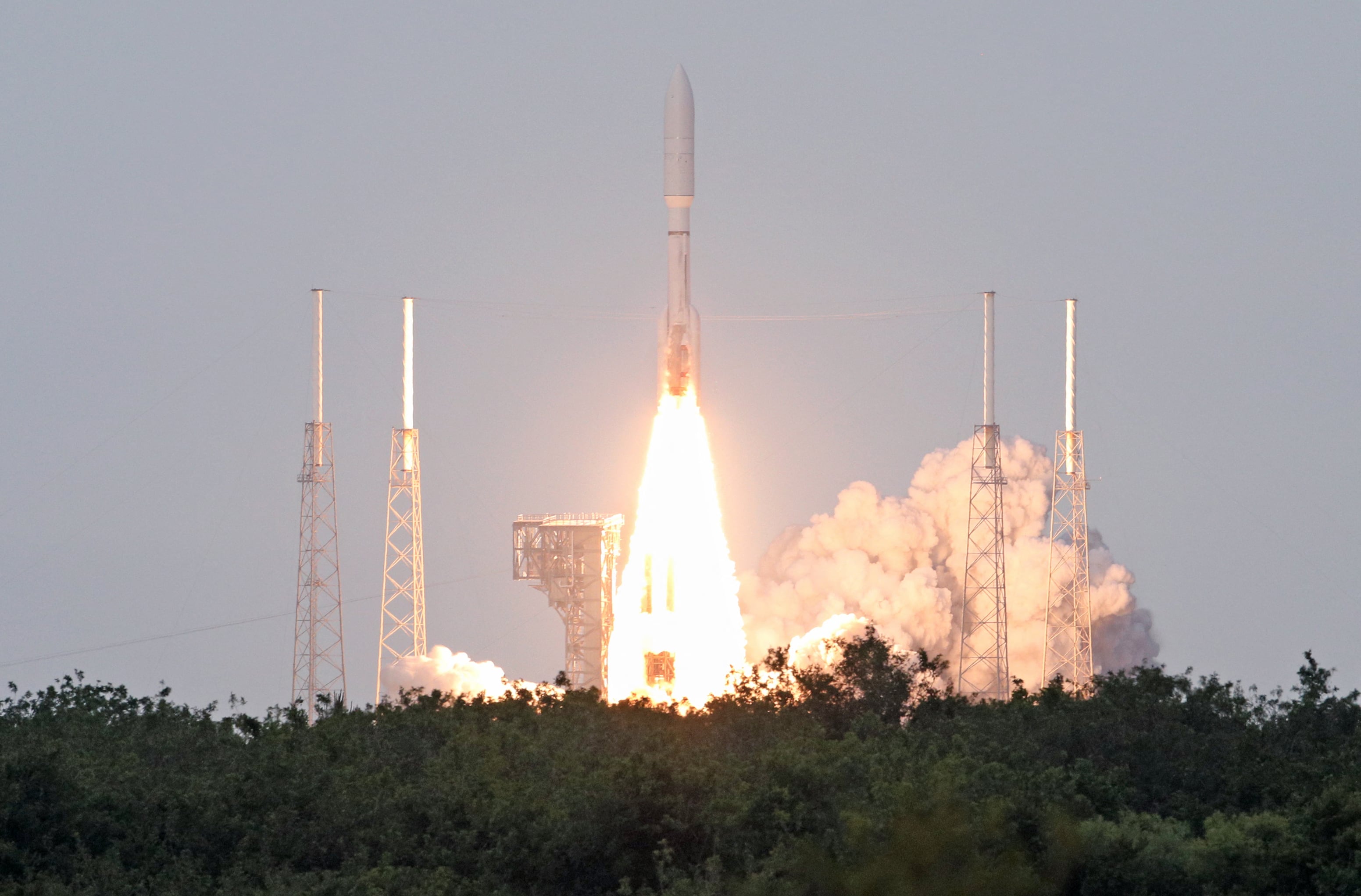ALBUQUERQUE, N.M. — The U.S. Space Force’s rapid development organization is on track to deliver its first system this year, a timeline that leaders say demonstrates the value of its unique role in the space acquisition ecosystem.
The Space Rapid Capabilities Office was created by Congress in fiscal 2018 to develop high-need operational prototypes as part of a push to speed up space acquisition. The office received its first projects in early 2019 and today manages 14 classified programs with the goal of transitioning them to operations within five years.
With its first projects approaching delivery at the end of this year and into 2023, Space RCO Director Kelly Hammett told reporters during a July 23 visit to its headquarters at Kirtland Air Force Base in New Mexico that the office is meeting schedule targets and working closely with the Space Force to ensure a smooth transition.
Because the programs are classified, Hammett said he could not discuss them in detail.
Foundational to the Space RCO’s ability to move fast are its decision-making authorities and its status as a direct reporting unit to Chief of Space Operations Gen. Jay Raymond. The office has no special exemptions from federal acquisition regulations or, as Hammett described it, “a magic wand” to move faster, but it does have independence and focused requirements.
Also key are its partnerships with the Space Force, Hammett said, noting that being co-located at Kirtland with organizations including Space Systems Command’s Innovation and Prototyping Delta and the Air Force Research Laboratory’s Space Vehicles Directorate helps to reinforce that collaboration.
While the offices all have a hand in the acquisition process, their roles are distinct. AFRL is focused on maturing technology and has deep space science and technology expertise. Space Systems Command fields operational capability. And the Space RCO delivers prototypes that can be quickly transitioned into SSC program offices.
Col. Jeremy Raley, outgoing director of the Space RCO’s strategic capabilities group and incoming head of AFRL’s Space Vehicles Directorate, said that while the lab is good at running experiments and proving that a technology will work, the Space RCO brings urgency and measured risk-taking to the table. Those niche abilities offer opportunities to learn from one another and to capitalize on the unique strengths of each organization.
“Collaboration is absolutely important,” Raley told C4ISRNET in a June 23 interview. “If we’re going to make efficient use of the taxpayers’ money, we more or less have to kind of divide our lanes and understand what each of us are doing and how we are leveraging our strengths.”
Integration over consolidation
The cooperation and alignment happening among the organizations represented at Kirtland is representative of the type of acquisition system the Space Force is trying to build. A major task for the service has been to streamline space acquisition, long hampered by bureaucratic decision-making processes. Lawmakers have criticized the service’s progress on this front, saying they want more details on its plan.
For the Space Force, streamlining has not necessarily meant reducing the number of organizations that acquire capabilities, but instead making sure their functions are clearly defined and integrated. For example, the service established a program integration council that includes representatives from SSC, Space RCO, Space Development Agency, Missile Defense Agency and other organizations involved in space acquisition. The council meets regularly to discuss projects and deconflict any overlap.
Assistant Secretary of the Air Force for Space Acquisition and Integration Frank Calvelli, whose role was created by Congress to better coordinate space system development and procurement, told reporters in his first press engagement last month he’s “quite happy” with the organizations he inherited.
“I plan no organizational changes at all,” Calvelli said during the June 28 roundtable, speaking specifically of SSC, Space RCO and the Space Development Agency, which today resides within the under secretary of defense for research and engineering’s portfolio, but will shift this fall to the Space Force.
Calvelli said that while there are a number of organizations working in space acquisition, he’s “OK with that.” Instead of targeting or consolidating, he plans to use his authority to make sure their work is integrated.
“They all have unique attributes, unique strengths and unique authorities that are kind of neat to be able to take advantage of,” he said.
Courtney Albon is C4ISRNET’s space and emerging technology reporter. She has covered the U.S. military since 2012, with a focus on the Air Force and Space Force. She has reported on some of the Defense Department’s most significant acquisition, budget and policy challenges.







